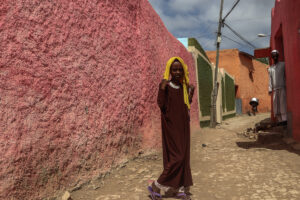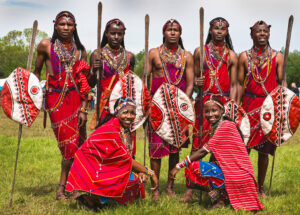Ethiopian food reflects on the local heritage and the deep-rooted history and culture. For those who visit the country on a safari or a vacation, trying the local cuisine allows you to experience that culture.
The way that meals are eaten varies from traditional American or European methods. Everyone gathers around a large metal tray, and hands go back and forth to scoop the food you intend to eat. This can of course take some getting used to for tourists.
Most Ethiopian dishes are good for you, tasty, and low in fat. Below are a few cultural favorites.
Some Food Staples
Many Ethiopian dishes revolve around injera, a spongey, grey-looking bread with a rubbery surface. Many different foods are served on top of this bread, including raw meat, vegetable curries, and spicy stews. Ethiopians don’t shy away from the use of hot spices in their cooking. Many of their dishes have a kick to them.
Ethiopians cook a lot with tef, a highly nutritious grain that is loaded with protein and calcium and is also gluten free. It’s a grain that is becoming known as a super-food in the US and Europe, with a reputation similar to quinoa, because of its nutritional benefits.
They use berbere in many dishes, which is a combination of chili pepper and other spices. They also use niter kibbeh, a butter that is infused with garlic, ginger and several other spices. Mitmita is another powdered seasoning mix that is commonly used.
A Few Favorite Dishes
Tibs
Tibs are sliced beef or lamb that is pan-fried in butter, garlic and onion. This local favorite can be served in a variety of ways, and this dish is often used to commemorate a special occasion, or for a festive meal among family and friends. The meat is often freshly taken from carcasses that hang directly outside the restaurant. While tourists may sometimes be disturbed by witnessing the source of the food, the truth is it couldn’t come from a more fresh and local source.
Kitfo
Another staple meat dish is kitfo, which is made with leaner meat. It’s considered a treat by locals, and it is also better for you.
Wat
Wat is made by adding beef, chicken, fish or other meats with red onion, legumes and a variety of spices. This dish is mainly served spicy but there are milder variations. There are also vegetarian variations of this dish as well, served with potatoes, carrots, or chard.
Breakfasts
Fir-Fir is a common breakfast dish made with shredded injera, and it is stir fried with spices or wat. Kinche is an Ethiopian variation on oatmeal, that makes for a common, delicious breakfast option. Fatira is another early morning option that is basically a fried pancake with flour and a layer of egg.
For many, the dining experience is communal in Ethiopia. The meal courses are customarily followed up with a course of Ethiopian coffee. Food is an essential part to the Ethiopian experience. We hope that you branch out and enjoy all that this region has to offer.


